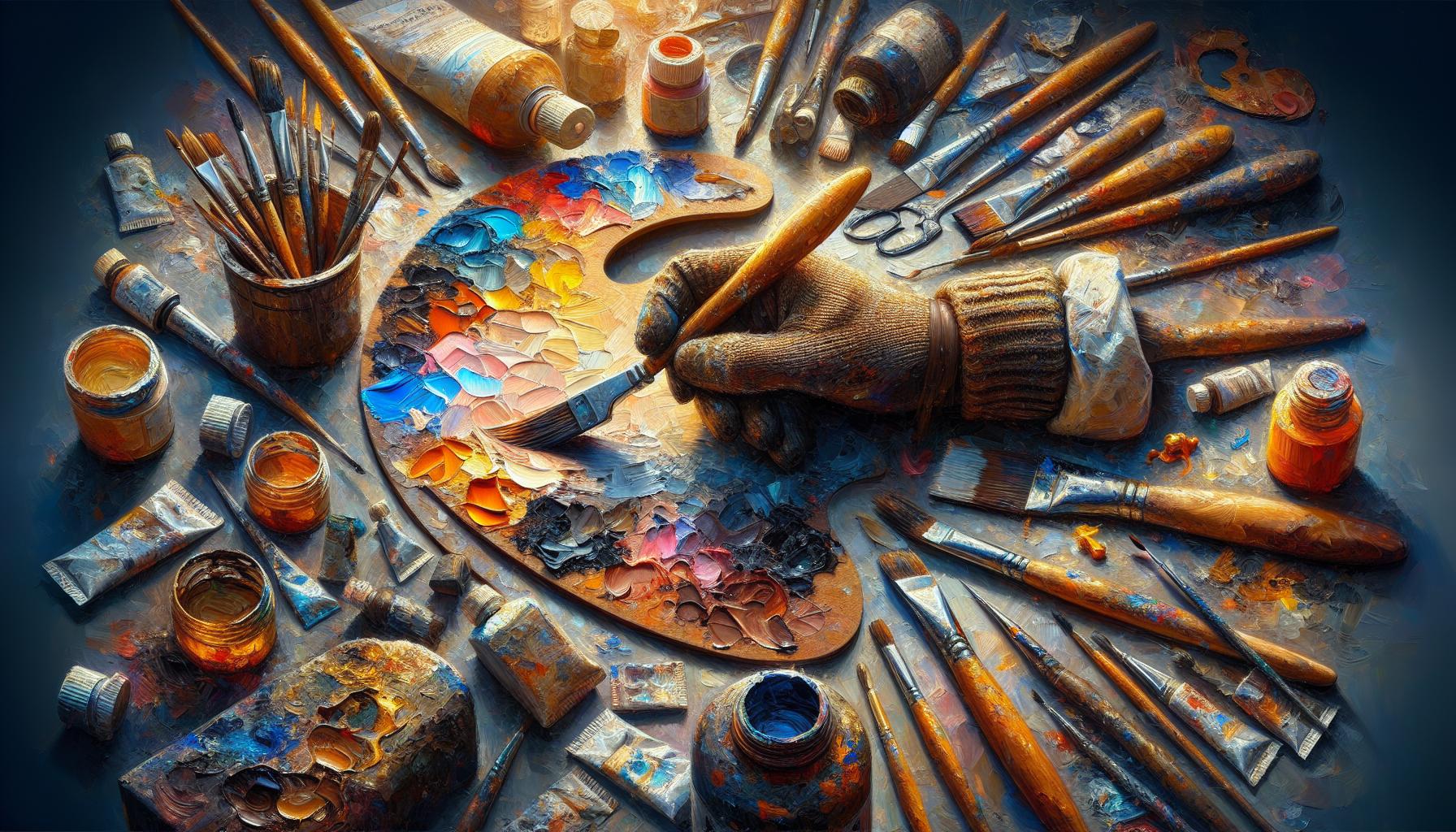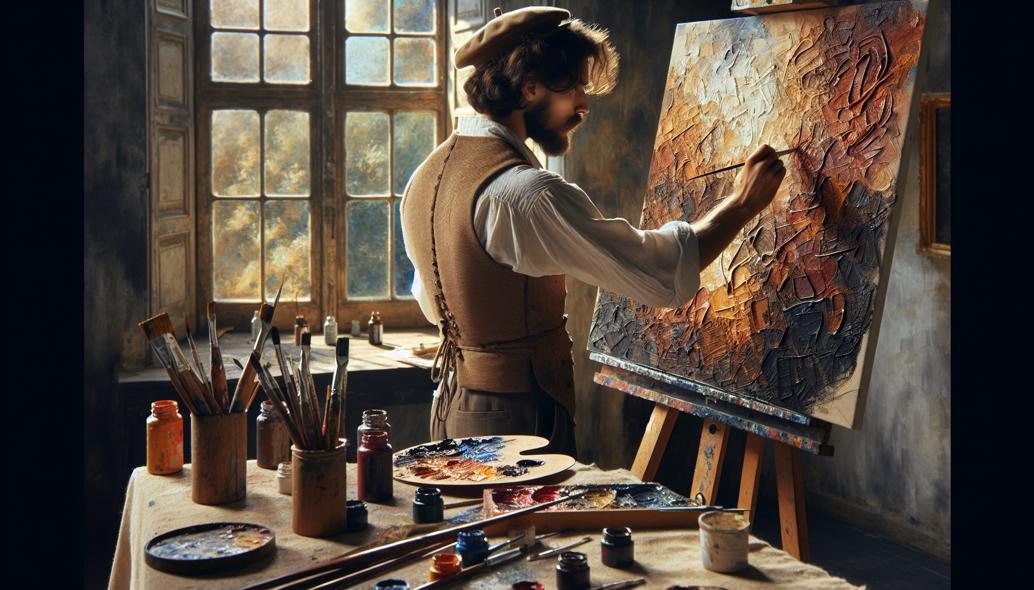Creating Realistic Textures with Palette Knife Techniques in Oil
Unlock the secrets of realistic textures with palette knife techniques in oil painting, transforming your art with depth and dimension. Discover how these methods can elevate your skills and captivate your audience!

Mastering the Art of Realistic Textures with Palette Knife Techniques in Oil
Palette knife painting is a dynamic and highly tactile technique that has garnered appreciation for its ability to create texture-rich imagery in oil painting. This method allows artists to explore the depth and dimension of their compositions in a way that brushes often cannot. In this tutorial, we will delve into creating realistic textures using palette knife techniques, providing you with in-depth insights to elevate your oil art craft. Whether you're a practicing artist or an enthusiast ready to experiment, understanding these techniques will enrich your repertoire and help you produce stunning, textured oil art.
Understanding the Basics of Palette Knife Painting
Before diving into advanced techniques, it's crucial to understand what palette knife painting entails. A palette knife is a blunt tool with a flexible steel blade used to mix and apply paint. Available in various shapes and sizes, this tool can serve a multitude of purposes from mixing to applying thick layers of paint directly onto the canvas. Unlike traditional brush techniques, the palette knife provides a new level of expressive capability, capturing light and shadows in a unique way that enhances the materiality of the paint itself. The key to leveraging this tool is to focus on how you can manipulate paint to create realistic textures that mimic elements found in nature.
Preparation: Ready Your Materials
Before commencing your palette knife adventure, ensure you have all the necessary materials. Invest in quality oil paints that offer rich pigments conducive to texture work. Your palette should include essential colors like titanium white, ultramarine blue, cadmium yellow, and burnt sienna. The canvas you choose should be of good quality, possibly prepped with gesso to prevent oil absorption. Lastly, choosing the right palette knife is essential. A knife with slight flexibility will offer control, while the shape of the blade will determine the strokes you can achieve.
Techniques for Achieving Realistic Textures
Realistic textures in oil painting are achieved through a deep understanding of surface quality and how light interacts with varied materials. Here, we explore several techniques:
- Layering and Building Up Texture: Start by laying down the broad areas of your composition. Use the palette knife to spread a thin layer of paint across the canvas, serving as your base. Once dried, gradually build up layers where you wish to add texture. The technique of layering offers depth and dimension as you vary the thickness and direction of your paint application. For instance, when rendering a rocky landscape, you can layer the browns and greys strategically, allowing some underlayers to peek through.
- Impasto Technique: One of the defining characteristics of palette knife painting is the use of impasto, where paint is laid on the canvas very thickly. This technique not only creates texture but adds a third dimension to paintings. Apply bold strokes with your knife, folding the paint in small peaks to reflect light similarly to how it might naturally fall on a surface like snow or the ocean's waves.
- Scumbling: This involves applying a thin, translucent layer of paint over dried layers. Use your palette knife to gently skim the surface, depositing pigment sparsely across textured underlayers. Scumbling is perfect for depicting weathered wood or faded foliage, lending itself to a more worn, soft fabric of texture.
Advanced Palette Knife Techniques for Oil Painting
To elevate your oil painting skills with palette knife techniques, consider these advanced methods:

- Directional Application: Use the knife to create directional marks that suggest movement — like wind in tall grass or the ripples on water. The flatness of the knife can create long, sweeping strokes, while the tip can be employed for finer, detailed textures.
- Edge Definition and Blending: While palette knives are superb for creating texture, they can also be used to blend. The edge of the knife is perfect for defining sharp lines — essential for realism in architectural structures or encrusted bark. Another subtle blending trick involves holding the knife lightly as you draw it, feather-like, across two adjoining colors, softening the transition and creating a delicate gradient.
Building a Textured Landscape with Palette Knives
Creating a landscape offers a wide expanse for exploring how to apply palette knife techniques effectively.
Begin by sketching your landscape composition lightly on the canvas. If painting a coastal scene, for example, begin by applying a rich, thick layer of ultramarine blue to depict the sea. Use the broad side of the knife for expansive areas and work with lighter touches towards the horizon, mimicking the natural atmospheric perspective.
To render the texture of rocks in the foreground, load your palette knife with a combination of burnt sienna and white to add highlights. Apply these with quick, confident strokes. For realism, ensure that you angle your strokes to resemble the craggy, uneven faces of rocks.
Texture in Oil Art: The Final Polish
Once you have your textures in place, give attention to the fine details to bring your painting to life:
- Explore Light and Shadow: At this stage, consider how the light source affects various textures. Load a narrow palette knife with a lighter color, and lightly swipe across the tops of textured areas to simulate light catching an uneven surface. Conversely, use darker tones to fill the recesses, enhancing the play of light and shadow.
- Highlighting and Accentuation: Using a nearly clean knife, pick up minute amounts of a light hue to pinpoint highlights. This is crucial for bringing realistic textures to their final form, emphasizing the most elevated parts of the texture for ultimate realism.
Conclusion
The journey of mastering realistic textures with palette knife techniques in oil painting is as rewarding as it is challenging. It involves understanding the intrinsic relationship between material, technique, and form. By practicing the methods shared in this guide, you can build a rich, immersive art piece that leverages texture's tactile quality to engage viewers. Remember, each stroke with a palette knife is an opportunity to bring new dimensionality and vibrancy to your artwork.
By consistently experimenting and pushing the boundaries of what’s possible with your palette knife, you’ll find your artistic voice resonating through the rich textures of your oil paintings. Happy painting!
